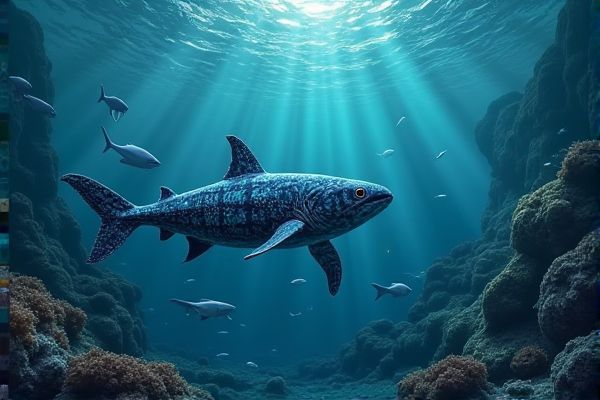
Artificial intelligence applications in marine biology research significantly enhance data analysis, allowing scientists to better comprehend complex marine ecosystems. Machine learning algorithms can process vast amounts of oceanographic data, identifying patterns and predicting species behavior based on environmental changes. AI-driven imaging techniques facilitate species identification and monitoring, enabling researchers to study biodiversity and assess the health of marine habitats. The integration of AI in modeling marine populations supports the formulation of effective conservation strategies and resource management practices.
AI usage in marine biology research
Marine Habitat Mapping
AI can enhance marine habitat mapping by analyzing vast amounts of underwater data more efficiently than traditional methods. For instance, institutions like Woods Hole Oceanographic Institution employ machine learning algorithms to identify and classify marine species in different habitats. This capability improves the accuracy of habitat assessments, potentially revealing previously unknown ecosystems. The advantages also include the ability to predict changes in marine environments due to climate change, aiding conservation efforts.
Species Identification and Classification
AI technology can significantly enhance species identification and classification in marine biology research. By utilizing machine learning algorithms and image recognition, researchers can automate the process of analyzing vast amounts of underwater imagery, leading to quicker and more accurate identifications. For example, the use of AI tools like Google Cloud Vision can streamline the classification of marine species, allowing for efficient data gathering and monitoring of biodiversity. This advancement holds the potential to improve conservation efforts and inform policies regarding marine ecosystems.
Ocean Health Monitoring
AI applications in marine biology research have the potential to enhance ocean health monitoring significantly. Techniques like machine learning can analyze vast datasets from ocean sensors, identifying patterns that may indicate changes in marine ecosystems. For instance, the use of AI algorithms by institutions like NOAA enables quicker detection of harmful algal blooms, which can affect marine life and human health. The integration of AI tools could streamline research efforts and improve the accuracy of assessments regarding oceanic conditions.
Autonomous Underwater Vehicles (AUVs)
AI can enhance data collection and analysis in marine biology research, offering precise insights into underwater ecosystems. Autonomous Underwater Vehicles (AUVs) equipped with AI can autonomously map oceanic terrains and monitor marine species. This technology may reduce the time researchers spend on manual data gathering, allowing for more comprehensive studies. As a result, the potential for discovering new marine species or tracking environmental changes increases significantly.
Marine Data Analysis and Interpretation
AI has the potential to significantly enhance marine biology research through improved data analysis and interpretation. By utilizing machine learning algorithms, researchers can identify patterns in large datasets, such as those generated by oceanographic sensors or satellite imagery. This capability can lead to more accurate predictions of marine species behaviors and ecosystem changes, benefiting institutions like the Oceanographic Institute. The chance of discovering new insights into marine conservation efforts could be greatly increased with these advanced analytical tools.
Coral Reef Preservation
AI can significantly enhance marine biology research, particularly in coral reef preservation. By utilizing machine learning algorithms, researchers can analyze vast datasets on coral health and environmental conditions more efficiently. For example, AI-driven image recognition tools help identify coral species and assess their conditions, leading to better conservation strategies. The potential for improved monitoring and predictive modeling may increase the chances of preserving these vital ecosystems amidst climate change.
Fish Population and Behavior Analysis
AI can enhance fish population and behavior analysis by processing large datasets collected from underwater sensors and video footage. Machine learning algorithms can identify patterns in fish movements and interactions, providing insights into species distribution and habitat preferences. Institutions like the NOAA Fisheries utilize AI to predict changes in marine ecosystems, which can inform conservation strategies. The potential for AI to improve understanding of marine life offers a significant advantage in preserving biodiversity.
Climate Change Impact Studies
AI can enhance marine biology research by analyzing large datasets, such as oceanographic data and species distribution models. This technology allows researchers to identify patterns and predict the impacts of climate change on marine ecosystems more accurately. For example, the use of machine learning algorithms can help scientists at institutions like the Scripps Institution of Oceanography assess how rising temperatures affect coral reef health. The potential for improved decision-making in conservation efforts is a significant advantage of incorporating AI into these studies.
Acoustic Signal Processing
AI can enhance marine biology research by improving the analysis of acoustic signals from underwater environments. For instance, using machine learning algorithms allows researchers to identify marine species and their behaviors more efficiently. The application of AI in acoustic signal processing can uncover patterns in animal communication or migrations, leading to better conservation strategies. This technology presents an opportunity for institutions like the Smithsonian Marine Station to deepen our understanding of marine ecosystems.
Marine Pollution Tracking
AI can enhance marine biology research by improving the accuracy of marine pollution tracking. For instance, machine learning algorithms can analyze satellite imagery to identify pollution hotspots in oceans. This technology enables researchers to monitor changes over time and make data-driven decisions for conservation efforts. The University of California's marine science programs are exploring these AI applications to better understand and address marine ecosystem health.
 techknowy.com
techknowy.com